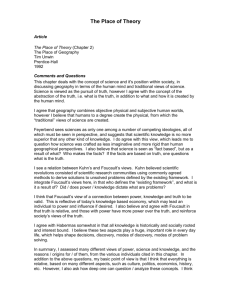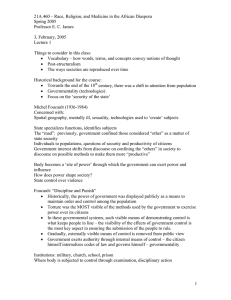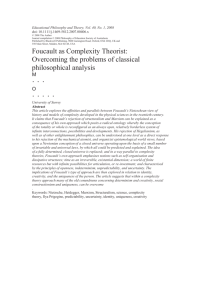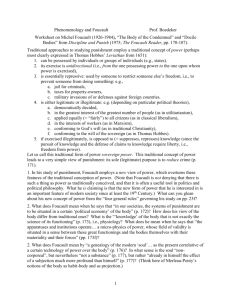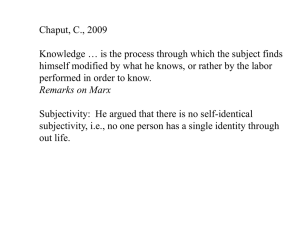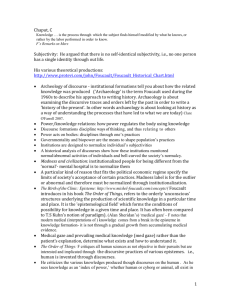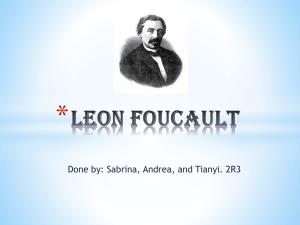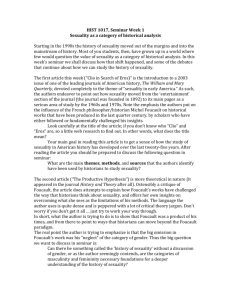PowerPoint 簡報
advertisement
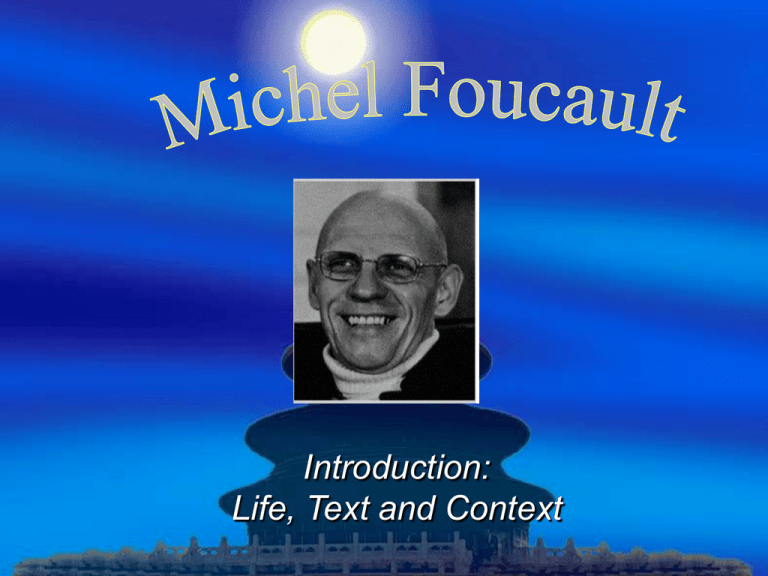
Introduction: Life, Text and Context •Who, or rather what, am I? Madness and Civilization I. 1926-1945 (Age 0-19): Life in Hometown 1926: Born, Poitiers, France 1936-40: Lycée Henri-IV 1939: W W II 1940-45: College St, Stanislas II. 1945-1955 (Age 19-29): Life in Paris 1945: Lycée Henri IV, Paris 1946: Ecole Normale Superieure 1948: licence de philosophie 1949: licence de psychologie 1951: agrégation de philosophie 1952-55: teaches pyschology at University of Lille III. 1955-1960 (Age 29-34): Life abroad 1955-58: teaches French culture and language at University of Uppsala, Sweden 1958: Director of French Center at University of Warsaw, Poland 1959: Director of French Institute in Hamburg, Germany Foucault and Jean Daniel IV. 1960-1966 (Age 34-40): Life in Paris • 1960-66: teaches philosophy and psychology at Clermont-Ferrand • 1961: Doctorat ès lettres • 1961: publication of Birth of the Clinic • 1965-66: works on the educational reforms V. 1966-1968 (Age 40-42): Life in Tunisia 1966-68: Visiting Professor of Philosophy, University of Tunis 1968: The May Student Revolt in Paris VI. 1968-1984 (Age 42-58): Life in Paris and abroad 1969: Elected to College de France 1969: publication of The Archaeology of Knowledge 1970-1983: regular visits to US; occasional trips to Brazil and Japan 1971-73: organizes “The Prisoners Information Group” (photo: Demonstration with Sarte and André in 1971) 1975-83: liberal political orientation: human rights, critique of totalitarian systems 1975: publication of Discipline and Punish 1976: publication of History of Sexuality, vol. 1 1984: publication of volumes 2 and 3 of History of Sexuality 1984: dies in Paris, June 25. Foucault’s Life-long Partner: Daniel Defer • “I have lived for 18 years in a state of passion toward someone. At some moments, this passion has taken the form of love. But in truth, it is a matter of a state of passion between the two of us.” (Foucault, 1981) This Introduction aims to broadly demonstrate Foucault’s theory and practice in terms of his Three major shifts: 1) Archeology: focusing on systems of knowledge in 1960s, Ex: Madness and Civilization (1961) Birth of the clinic (1963) The Order of Things (1966) The Archaeology of Knowledge (1969) 2) Genealogy: focusing on modalities of power in 1970s Ex: Discipline and Punish (1975) The History of Sexuality Vol. I (1976) Photo: Protest in Spain against the imminent execution of ETA and FRAP militants in September 1975 3) Techniques of the Self: focusing on technologies of the self, ethics and freedom in 1980s. Ex: The History of Sexuality Vol. II (1984) The History of Sexuality Vol. III (1984) Foucault says, “The goal of my work during the last twenty years has not been to analyzed the phenomena of power, nor to elaborate the foundations of such an analysis. My objective, instead, has been to create a history of the different modes by which, in our culture, human beings are made subjects.” Ethics “Maybe the target nowadays in not to discover what we are, but to refuse what we are.” (Foucault 1982) Photo: Foucault and Jean-Paul Sartre (Fotolib); His schema of three modes of objectification of the subject: 1. The first mode of objection of the subject — “dividing practices.” Ex. Discourses combining the mediation of a science and the practice of exclusion. 2. The second mode of objection of the subject—“scientific classification.” Ex. Discourses of life, labor and language. 3. The third mode of objection of the subject— “subjectification” Ex. Discourses of sex. The End: Welcome to The Foucauldian World
